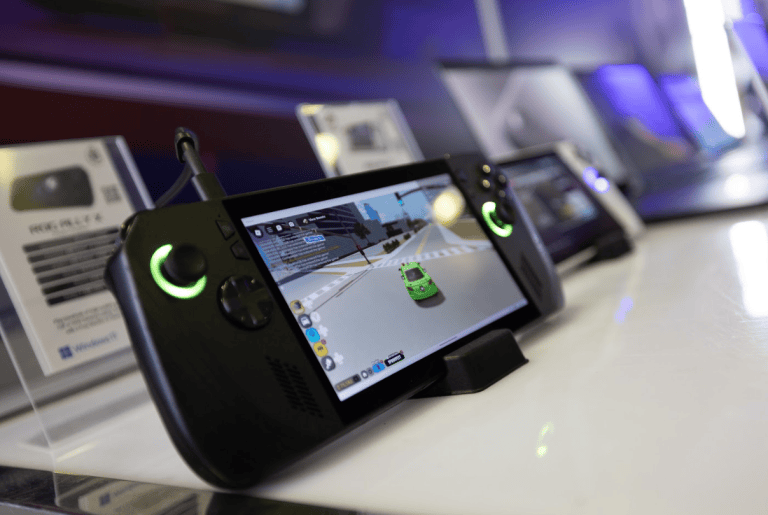The Montréal International Game Summit opens its doors tomorrow at Grand Quay with a clear brief for the industry: build smarter, fund better, and compete globally. MIGS25 brings two concentrated days of programming on November 11–12 that examine how studios are navigating shifting economics, evolving production models, and new routes to market. Organized by La Guilde du jeu vidéo du Québec and produced by XP Gaming, the 22nd edition puts practical guidance in the spotlight while positioning Montréal as a gateway for companies doing business in North America.
Why this year feels different
The last 18 months have forced teams to rethink their playbooks. Release calendars got tighter. Funding became more selective. Production pipelines had to do more with less. MIGS25 leans into that reality with a program that focuses on the how: production choices that keep teams healthy, funding paths that mix private and public capital, and external development that extends capability without adding permanent overhead.
The event’s scale reflects the urgency. Four dedicated stages replace last year’s single track, opening space for deeper sessions on design, multiplayer, live operations, UI and UX, production leadership, publishing, and emerging tech.
Montréal’s moment, explained
Montréal has spent two decades turning early advantages into a durable cluster. The city offers an experienced talent pool, a dense network of service providers, and a culture of collaboration across studios large and small. MIGS25 is the yearly snapshot of that engine at work, with an emphasis on how local strengths connect to global opportunities.
Québec’s role is not just volume of teams. It is the mix. AAA publishers, mid-sized independents, boutique specialists, and tools providers sit within a short ride of each other. That blend is why deal-making at MIGS is pragmatic. Conversations move quickly from “can you do this” to “how soon can you start” because the right partners are in the room and accustomed to collaborating.
What that means for visiting executives
For publishers and investors, MIGS25 is a single location to assess capability across art, engineering, audio, QA, compliance, and porting. For founders and production leads, it is a way to stress-test roadmaps, sharpen budgets, and meet partners who can close skill gaps on tight timelines. Montréal’s time zone overlap also matters. Teams can bridge Europe and North America in a single working day, which is meaningful for projects that live on daily standups and frequent integration.
Financing is front and center
Capital looks different than it did a few years ago. Fewer blanket bets. More targeted checks tied to defined milestones and market proof. MIGS25 acknowledges this shift with sessions that unpack options across publisher deals, equity, debt, and non-dilutive support, as well as hybrid approaches that stage funding against a portfolio of deliverables rather than a single moment of risk.
The goal is to replace broad optimism with practical clarity. What does a sustainable budget look like for your genre and scope. What are realistic timelines for console certification when teams are also shipping live content elsewhere. How do you de-risk a vertical slice before a greenlight. The conversations at MIGS this year are engineered to answer those questions with examples that translate across studio sizes.
Emerging markets and global strategy
International growth vectors remain important. The summit dedicates time to regions that are reshaping the business of games through investment, distribution, and events. The focus is not on headlines but on what travel-worthy opportunity looks like for Canadian teams: where cross-platform live ops are expanding, which storefronts and ecosystems are opening, and how to align production schedules to those shifts without breaking teams.
External development gets a bigger stage
The expanded ExDev Hub powered by Game Caviar is a simple proposition with outsized impact: connect more than 200 buyers with a vetted network of 1,400 service providers in a format built for decisions. Studios that need capacity can define briefs, request capability maps, and walk away with blended teams that can start quickly. Providers can match their specialties to real production gaps instead of blind outreach.
This part of the summit reflects how work is actually shipped today. External development is not a sidecar. It is core to modern pipelines, whether that is multiplayer feature work, mission scripting, performance profiling, art and animation, audio integration, accessibility, or build engineering. MIGS25 treats it that way, with sessions that look at handoff quality, asset tracking, code ownership, and how to write scopes that reduce friction at every integration point.
The Business Lounge in practice
The Business Lounge powered by MeetToMatch brings structure to that deal energy. Calendars fill quickly, but the format is simple. Short, punctual meetings with buyers, publishers, investors, and co-dev partners who arrive with live needs. It is not a job fair. It is a marketplace. Confirmed participants include platform holders, established publishers across PC and console, and venture partners looking for teams with credible production discipline.
Craft first: what is on the four stages
MIGS25 expands from one to four stages to allow deeper dives without losing the thread. Expect talks that move beyond decks to working practices teams can adopt next sprint.
- Design and narrative: Systems that scale, onboarding that respects player time, narrative tools that speed iteration, and how to test difficulty curves earlier.
- Multiplayer and online: Matchmaking, netcode tradeoffs, anti-cheat, telemetry that helps before launch, and post-ship triage when queues spike.
- Live operations: Roadmapping for small teams, how to choose events that fit production, pricing and bundles, and the right way to sunset features.
- UI and UX: Input mapping across platforms, readability on wide and ultra-wide, and accessibility as part of core design rather than a late patch.
Sessions on production leadership and technology run throughout, including planning for certification, platform requirements, source-control hygiene, build automation, and profiling on target hardware. The message is consistent. Craft decisions are business decisions.
Audio takes a victory lap and a workshop
Audiokinetic marks a milestone at MIGS25 with the Audio Summit and the Wwise Tour. The value is hands-on. Teams can review approaches to adaptive music, spatialization, memory budgets, voice-over workflows, and how to structure audio pipelines so creative choices do not create performance debt. For smaller studios, this can be the difference between good and great. For larger teams, it means consistent outcomes across multiple SKUs without bespoke fixes every time.
Québec’s talent pipeline is the quiet advantage
MIGS25 also functions as a skills forum. Sessions map how universities and private programs feed into production roles and how studios can shape internship paths that deliver value. The event is recognized under Québec’s 1 percent workforce training law, which helps employers count participation toward annual training investments. It is a practical lever for local hiring managers planning upskilling in the next fiscal year.
Why this matters beyond Montréal
Teams across Canada benefit when the Québec pipeline is healthy. Porting work in Ottawa, gameplay engineering in Toronto, art and animation on the South Shore, community and trust in Vancouver. MIGS gathers those threads so production leads can staff sensibly with a mix of local hires and remote partners. The point is not to keep every role in one postal code. It is to keep projects moving with quality.
Indies get a runway, not a separate room
Independent studios have a clear path at MIGS25. The Content Pass offers two days of talks across four stages without the pressure to schedule meetings. The Indie Zone provides visibility on the floor. Indie Pods make it easy to show a playable to publishers, investors, and peers. For teams ready to pitch, upgrade paths unlock the same business access as larger studios at a lower price point. The design is intentional. Learning, showcasing, and deal-making sit side by side so smaller teams can do the full cycle in two days.
Publishers and partners to watch
The floor plan highlights a balanced mix of established publishers, platforms, and funding partners. Expect conversations across PC, console, and cross-platform strategies. The spread matters. It ensures that demos and pitches find multiple homes, whether the game is a premium single-player experience, a co-op title built for seasons, or a multiplayer project with a careful content roadmap.
What these buyers are looking for
Consistency of execution. Clear understanding of cost to finish. Evidence that the team can ship the milestone they are pitching. Teams that show they can integrate external partners well have an edge. Strong UI and UX thinking helps. A sober plan for scale and live ops helps more.
Practical outcomes: what success looks like at MIGS25
A productive summit is not measured by selfies or hallway anecdotes. It is measured by next steps written down by Tuesday night.
- Shortlist of external partners with availability, rate cards, and named leads.
- A revised scope with integrated support for art, engineering, or audio where needed.
- A funding plan that shows staged risk reduction across vertical slice, alpha, beta, and certification.
- Platform timelines penciled against real submission windows and known content beats.
- A staffing plan that balances in-house focus with external development to keep velocity without burning people out.
If attendees leave Grand Quay with that list in motion, their time at MIGS25 did the job intended.
For teams arriving with questions
Bring three that matter to your project and be ready to change them after the first morning.
- What is the smallest version of our game that proves the promise and justifies the next check.
- Which external partners can accelerate that proof without locking us into brittle tech choices.
- What are the two risks that could delay certification and how do we address them in the next 30 days.
The summit’s sessions and meeting formats are built to answer those questions plainly. Use the four stages for context, the Audio Summit for practical pipeline improvements, the ExDev Hub for capability, and the Business Lounge for timing and budget alignment.
Event specifics at a glance
- Dates: November 11–12, 2025
- Venue: Grand Quay, Old Port of Montréal
- Format: Four stages of programming, Audio Summit, ExDev Hub, Business Lounge, Innovation Expo, Indie Zone
- Who attends: Developers, publishers, investors, platforms, and service providers from 25 countries
- Passes: Content Pass, Student Pass, and upgrade options for business access
- Local benefit: Recognized under Québec’s 1 percent workforce training law
Passes are available now. Group discounts apply for teams planning to send multiple attendees. Full programming and speaker details will roll out on-site and through event communications during the show.
How to use the two days
Day one is for mapping. Hit a morning track that aligns with your discipline, take the Audio Summit block if audio is a bottleneck, then move quickly into the ExDev Hub with a short list of needs. End the day with one or two Business Lounge meetings to test your pitch.
Day two is for commitments. Confirm partner fits, set discovery calls for the following week, and finalize a post-MIGS action sheet with dates and owners. If you are showing a game, schedule two floor walks with publishers who match your genre and platform plan. Leave with the next milestone defined.
Bottom line
MIGS25 is built for the work of building games. It recognizes the market as it is, not as we wish it to be, and concentrates on the decisions that move projects forward. For companies operating in Canada and partners arriving from abroad, Montréal provides the people, the partners, and the structure to make the next quarter count.







